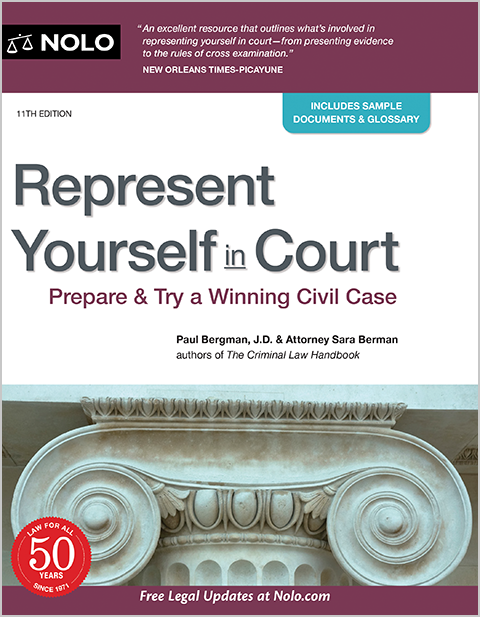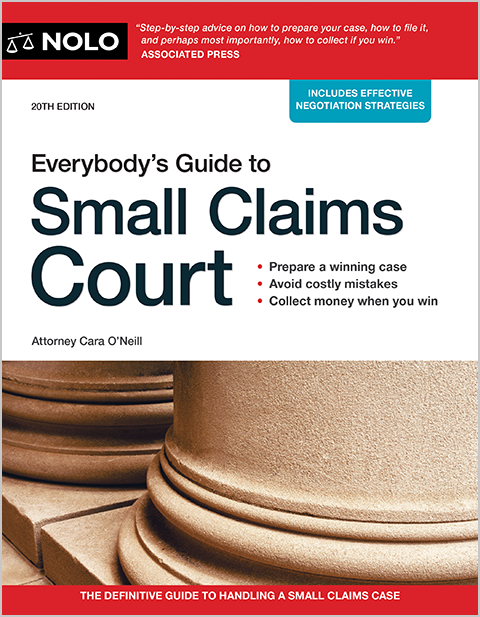Get good results at your mediation by keeping these basic tenets in mind.
Mediation is a form of alternative dispute resolution that can be used in most non-criminal cases, including disputes involving contracts, leases, small businesses, employment, child custody, and divorce. In a successful mediation, all interested parties work cooperatively toward a settlement or fair resolution of their dispute with the help of a neutral mediator who facilitates the process. So what are the keys to keeping your mediation on the path toward a fair and agreeable resolution? Here are ten rules to follow.
To learn whether mediation is the right choice to resolve your dispute, check out Why Consider Mediation?
Rule 1: The decision makers must participate.
Who is a decision maker? This seems like an easy question. When a party in a lawsuit is an individual, that person is the decision maker. But the answer is less clear when a party is a business or other entity. When it comes to businesses and other entities involved in a mediation, the person who needs to participate must have the power to accept a resolution made by the other party.
Participating in mediation means being personally involved in all of the events that occur during any mediation session, gaining a realistic understanding of the dispute, and having the chance to voice opinions and concerns. Physical presence is the best form of participation, but participating in mediation by videoconference or speakerphone can be appropriate when physical presence isn't possible.
Rule 2: Important documents must be physically present.
Mediation involves resolving differences of opinion about a dispute, and documents can be invaluable in achieving that goal. For example, in a dispute between a homeowners association and a condominium owner, the covenants, conditions, and restrictions must be physically present at a mediation session. Similarly, the policies must be available in a dispute between an insurance company and a policyholder.
Rule 3: Be right, but only to a point.
In every dispute, every party typically believes their position is the right one. In a mediation, the question "Who is right?"—that is, who is likely to ultimately prevail if a resolution isn't reached and mediation is followed by a lawsuit—is important because realistically predicting the chances for ultimate success defines which of the options for resolution are realistic. However, parties should not focus exclusively on demonstrating that they are right (or more right than the other side) because this tactic rarely does much to resolve conflict.
Rule 4: Build a deal.
In a fight, the goal is to win. But fighting involves pursuing your demands without regard for the effect on your opponent. Fighting also requires significant effort in resisting your opponent's moves.
In mediation, the goal is resolution. Achieving a resolution requires finding options that will satisfy both parties, and it is much like making a deal in a commercial context. It must benefit all involved before they agree to work together. Similarly, in mediation, you should be concerned not just with your interests but also with your opponent's interests because your opponent must feel like the resolution reached in mediation will be better than the outcome at trial.
Rule 5: Treat the other party with respect.
Consent (agreement) is essential to any deal made in mediation. A party who has been insulted is not usually inclined to give consent. A party who feels disrespected tends to be distracted by this to the exclusion of all else, which is counterproductive to the mediation process. This is not a matter of "making nice." It is a matter of avoiding mindless or gratuitous disrespect.
Rule 6: Be persuasive.
In a successful mediation, you must be persuasive about the merits of your position on the substance of the dispute and about the mutual benefits of any potential deal.
The classic means of persuasion involves establishing the right approach, at the right time, with the right emotional tone, with the force of objective logic, and with the strength of personal credibility. A more recent idea that can be helpful involves a unilateral offer by one side to the other. Such an offer can and often does draw a reciprocal offer from the other party in return, creating a positive cascade until a compromise is reached.
Rule 7: Focus on interests.
In their seminal book Getting to Yes, Roger Fisher and William Ury describe the importance of interests. According to Fisher and Ury, the parties' interests define their dispute. This is a revolutionary statement because the conventional wisdom had been that a dispute is defined by the parties' positions. An "interest" is a want, and a "position" is one way to satisfy a want.
Knowing your interests is essential, but it is only part of your task in mediation. The other party has interests too, and you need to know what those are. Identifying the other party's interests is usually more complex than identifying your own. Initially, this requires speculation, but once a mediation session starts, you can ask questions and glean information from what the other side says.
Rule 8: Be a problem solver for interests.
A resolution involves reconciling interests. Options must be identified or created, and those options must allow both parties to achieve enough of their interests to be better than no deal at all.
Reconciling interests requires problem solving, creativity, and an open mind. A good technique for generating this type of open thought is brainstorming, a process in which parties identify every idea they can think of to reconcile their interests. No idea is rejected or criticized, and ideas can build on one another. The better ideas usually come late, after people believe they have run out of ideas. Once several options are identified, then the parties can evaluate them and select those that result in the maximum benefits for each party.
Rule 9: Work past the anger.
At some point in the mediation process, the parties begin to understand that perhaps they are not "most right" about the substance of the dispute or that they will need to take less (or give more) to make a mutually acceptable deal. When this happens, the parties often get frustrated, and then angry. Many parties believe their anger is a sign that things are not going well and that they should stop the mediation. This is incorrect. A deal can still be achieved if the parties can consent to a resolution that satisfies their interests better than having no deal. Developing such an option is work that can continue even if—and partly because—the parties understand that they will not get everything they initially demanded.
Rule 10: Be patient.
Mediation involves change. Parties in a dispute typically believe they are correct about the dispute. Each side may or may not understand its own interests and those of the other party, and each may have unrealistic expectations. Each party may be unwilling to treat the other with any degree of respect. It takes time to address these issues, and it takes time for people to change their minds. Parties in mediation need to allow time for these changes to occur. This one is the most important of these ten rules for a successful mediation.
Read Mediation: The Six Stages for more practical tips on the mediation process.



